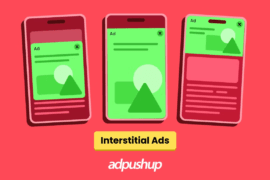For advertisers, purchasing ad impressions often works on a Cost Per Mille (CPM) model. Under this model, advertisers pay a fixed amount to purchase a thousand impressions. For instance, a website that covers personal technology might sell 2,50,000 leaderboard impressions at an $18 CPM—for the advertiser, this brings the total ad spend to $4500. Clearly, the CPM model is focussed on quantity rather than quality. But why does it matter?
The CPM model has been around for a while, but advertisers are now shifting their priorities from the quantity to the quality of impressions served. The CPM metric only gives advertisers information about the cost of serving a thousand impressions. It does not account for any other checks and balances, such as whether or not the inventory provides a brand-safe environment.
Advertisers want more control over where and how their ads are being served, to fulfill this need, the buy-side is slowly moving over to a newer version of CPM, called the qCPM. Recently, the industry has also seen vCPM rising as an alternative to CPM一 a metric that helps advertisers pay only for impressions that are counted as viewable.
Understanding qCPM
qCPM or Quality CPM means cost per thousand impressions that are counted only when certain quality parameters are met on the publisher’s end. These parameters can include viewability, ad display environment, user targeting, ad delivery, frequency capping, and other secondary factors that impact the performance of an ad campaign.
We can say that from the advertiser perspective, qCPM is an improvement over both CPM and vCPM, as it gives them more control over what does and does not count as a valid impression.
If CPM = Cost / Impressions * 1000
And vCPM = Cost / Viewable impressions * 1000
Then, qCPM = Cost / Quality impressions * 1000
Why qCPM is Becoming Popular Now
In advertising, factors like the time when an ad is served, the place where an ad is displayed, users to whom an ad is targeted, and how frequently the ad appears can hugely impact campaign performance. With CPM, advertisers had no control over any of those factors.
Most transactions under the CPM model used to happen considering only the display unit, regardless of when, where, and to whom the ad was being shown. qCPM is gaining popularity because of its ability to account for the other factors that affect a campaign’s performance.
qCPM, just like CPM, has also been around for a while. However, the metric began to garner traction after use cases from agencies like Hearts & Science, Essence, Adlicious, and Adelaide came to public notice. These agencies were known to be using qCPM as a substitute to CPM after they thought of improving the way ad impressions were being purchased.
Also read: Understanding EPMV: The New North Star Metric for Publishers
How qCPM Affects Publishers and Advertisers
qCPM helps advertisers justify their ad spend by giving them more granular control at the buying stage. As previously discussed, CPM is simply a purchase metric that defines how much the advertiser will pay for a certain number of impressions. qCPM, in turn, helps to formulate an informed campaign strategy both before the campaign is run and during post-campaign analysis, by showing how various factors affect final performance.
The various types of ad fraud that plague the ad tech supply chain have been one of the biggest advertiser concerns in recent times. While qCPM may not be a comprehensive solution to that, it does help combat ad fraud to some extent by validating ad impressions as ‘Qualified’ after conducting certain previously agreed upon quality parameter checks.
For publishers, qCPM provides an environment of transparency and an opportunity to build more sustainable, long-term relationships with the buy-side. Publishers who have already invested time and effort to maintain a high-quality inventory will see better returns when working on the qCPM model, as advertisers will flock to them—increasing inventory competition. For publishers who lag in this area, qCPM is a wake-up call to assess and improve their inventory.
Conclusion
The agencies that popularized this metric have their own applications. While Hearts & Science combines its Google Ads impression data with its DSP and CDP to measure campaign performance, Adelaide uses qCPM as a scoring method on different ad units.
qCPM aims to improve the buying efficiency for advertisers and the credibility of publishers. Programmatic buying and selling methods are the major revenue-drivers for both publishers and advertisers, and qCPM has the potential to bring more transparency into them.
By penalizing vendors for malpractices like charging hidden-free or buying and selling fraudulent impressions, qCPM may be able to curb the dark side of programmatic. Moreover, publishers are incentivized to prioritize quality over quantity and deliver more value to buyers.
In the long run, qCPM may end up promoting a qualitative approach over quantitative when it comes to measuring inventory value, which is better for everyone involved in the process.

Shubham is a digital marketer with rich experience working in the advertisement technology industry. He has vast experience in the programmatic industry, driving business strategy and scaling functions including but not limited to growth and marketing, Operations, process optimization, and Sales.







